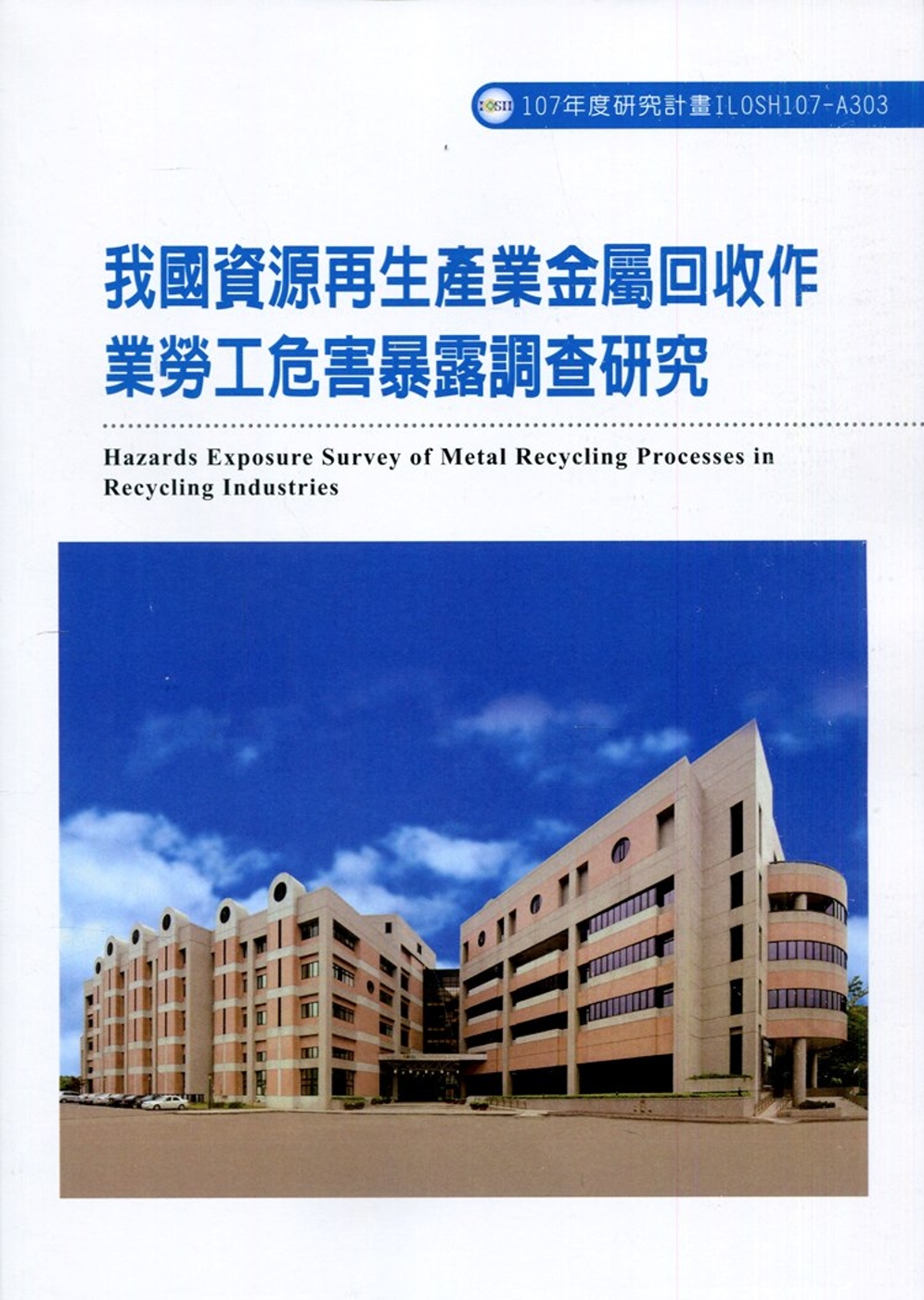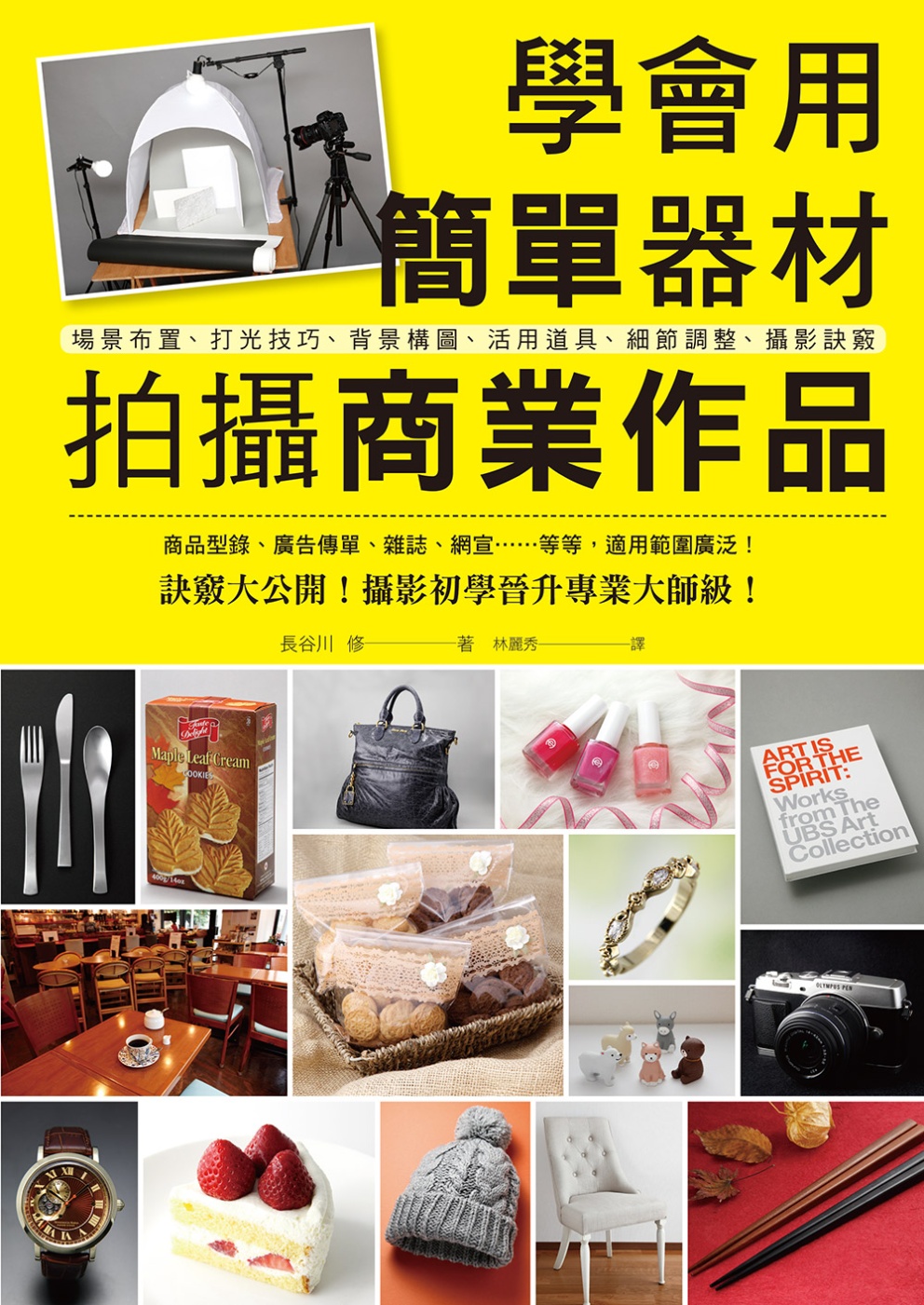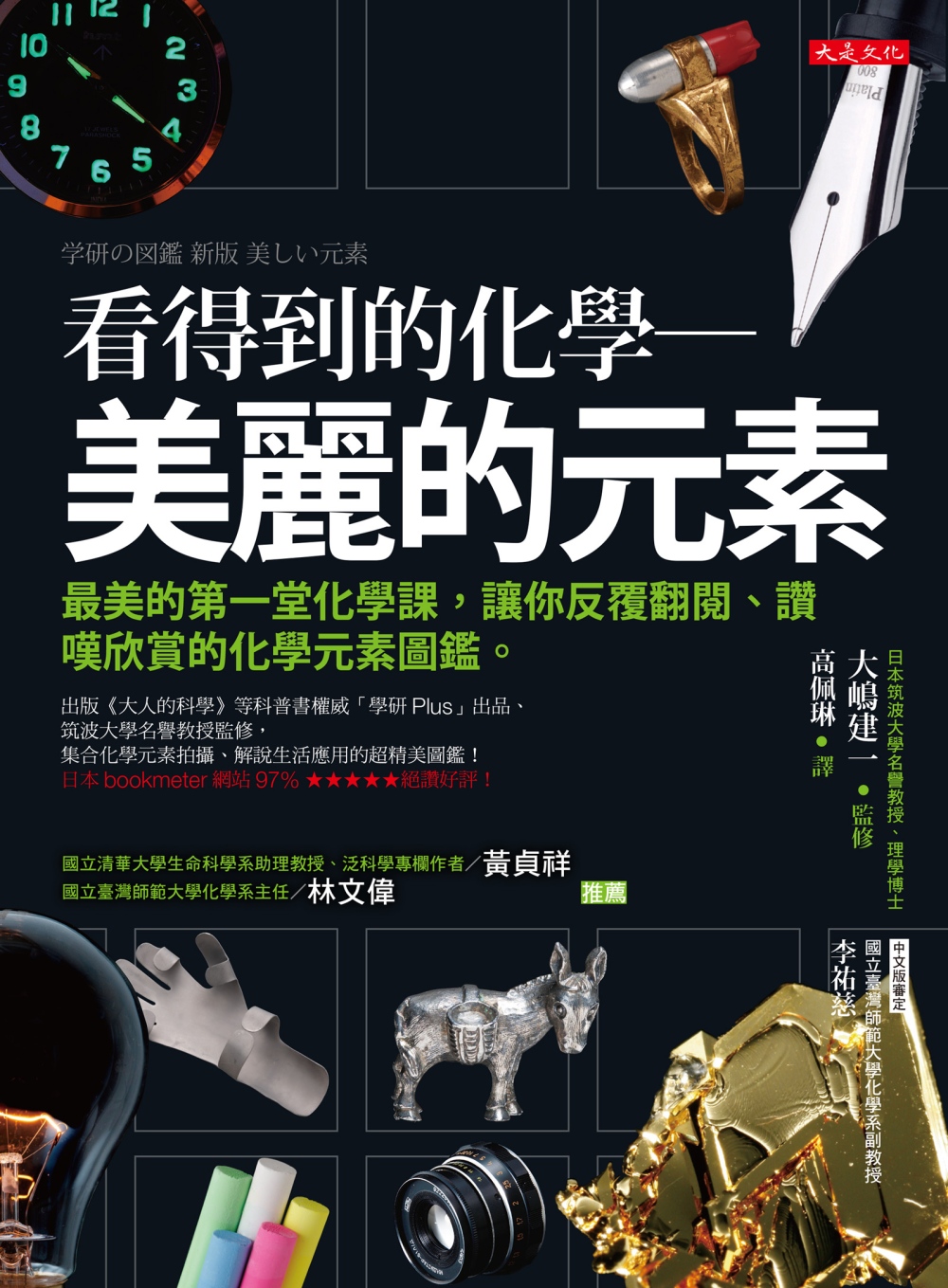貴金屬分離與精煉工藝學(第二版) | 如何做好生意 - 2024年11月

貴金屬分離與精煉工藝學(第二版)
本書全面系統地總結了貴金屬分離與精煉工藝。書中首先概括介紹了貴金屬的主要物理化學性質和貴金屬的重要化合物及配合物,以及貴金屬分離方法和工藝流程,進而深入淺出地對金、銀、鈀、鉑、銠、銥、鋨、釕的分離精煉工藝分別進行了重點論述,還介紹了光譜分析用高純貴金屬基體的制備方法。全書理論緊密聯系實際,可操作性強。為了滿足國外同行的閱讀需要,本書特意增加了英文目錄。為了方便查閱,附錄列出了上海黃金交易所可提供標准金錠企業名單、上海黃金交易所可提供標准金條企業名單、上海期貨交易所金錠注冊商標、包括標准及升貼水標准、上海黃金交易所可提供標准銀錠企業名單、美國材料與試驗學會(ASTM)及俄羅斯貴金屬產品標准(ΓΟCΤ)。本書與第一版相比變化較大的是,增加了選擇性沉淀及選擇性吸附鉑族金屬(鉑、鈀、銠)新技術、固相萃取分離貴金屬新技術;完善了分子識別分離貴金屬新技術;重新改寫了金的精煉工藝,尤其是增加了高純金(99.999%)制備新工藝;增加了無銅離子及高電流密度銀電解新工藝;王水溶解?氯化銨直接沉淀精煉鈀新工藝;亞硫酸鈉(草酸銨)還原?氯氣氧化精煉鉑新工藝;銠的溶解新技術、離子交換凈化?直接還原銠(銥)新工藝;計算機靶材用高純釕粉制備新工藝;銀錠自動澆鑄機等。本書可供從事貴金屬礦產資源提取冶金、貴金屬二次資源綜合利用、貴金屬分離提純與精煉、貴金屬新材料研究、貴金屬冶金分析及設計的研究人員、生產技術人員參考,同時也可供高等院校化學冶金專業的師生參閱。余建民:研究員,長期致力於貴金屬礦產資源、二次資源的提取冶金、分離、精煉的研究與技術開發,完成多項國家、省部級、國有特大型企業課題。
1貴金屬元素化學0011.1貴金屬的電子層結構和氧化態0011.2貴金屬的主要物理性質0021.3貴金屬的主要化學性質0041.4貴金屬重要化合物0051.4.1氧化物 0051.4.2氫氧化物0071.4.3硫化物0081.4.4鹵化物0091.4.5硝酸鹽0121.4.6氰化物0121.4.7硫酸鹽0131.5貴金屬重要配合物0131.5.1金配合物0141.5.2銀配合物0141.5.3鈀配合物0161.5.4鉑配合物0181.5.5銠配合物0191.5.6銥配合物0211.5.7鋨配合物0221.5.8釕配合物0231.6貴金屬在酸性氯化物介質中的主要存在形式024參考文獻0252貴金屬的分離方法0262.1貴金屬物料的溶解0262.1.1易溶物料的溶解0262.1.2難溶物料的溶解0292.1.3貴金屬物料溶解動力學0362.2濃硫酸浸煮法分離賤金屬0392.3蒸餾法選擇性分離鋨、釕0402.3.1鋨、釕的化學性質0402.3.2鋨、釕的蒸餾方法0412.3.3中國貴金屬精礦蒸餾鋨、釕的工藝流程0442.4蒸殘液的預處理0472.5置換法0482.5.1銅粉置換法從脫膠液中置換金、鈀、鉑0492.5.2鋅、鎂粉置換法從一次置換液中置換銠、銥0542.6還原法0552.6.1還原法分離貴、賤金屬0552.6.2選擇性還原法分離金0562.7沉淀法0582.7.1影響沉淀分離的因素0582.7.2沉淀法分離貴、賤金屬0592.7.3選擇性沉淀法分離金、鈀0622.7.4選擇性沉淀鈀0622.7.5選擇性沉淀鉑0662.7.6選擇性沉淀銠0692.7.7貴金屬傳統沉淀分離工藝0702.8水解法0712.8.1氧化水解法分離鉑0712.8.2亞硝酸鈉配合水解沉淀法0722.9氨水配位法分離鈀0722.10無水二氯化鈀結晶法分離鈀0722.11萃取法0732.11.1溶劑萃取分離貴金屬概況0732.11.2貴金屬萃取分離工藝0752.12離子交換法0792.12.1離子交換法分離賤金屬精煉貴金屬0792.12.2離子交換樹脂提取分離貴金屬0802.13固相萃取技術0842.13.1概述0842.13.2固相萃取技術分離金0852.13.3固相萃取技術分離鈀0902.14分子識別技術0922.14.1分子識別技術(MRT)的基本原理0922.14.2在貴金屬礦產資源中的應用0932.14.3在貴金屬二次資源中的應用0992.14.4在電解液凈化等領域中的應用1032.14.5在核燃料后處理中的應用1082.14.6國內相關研究概況108參考文獻1123金的精煉工藝1163.1概述1163.2金的火法精煉1173.2.1火法氧化精煉法 1173.2.2氯化精煉法1193.2.3溫和氯化法1233.3金的電解精煉1233.3.1金電解精煉原理1243.3.2金電解時雜質的行為1263.3.3金電解精煉實踐1293.4電解精煉金閉路循環新工藝——J工藝1373.4.1J工藝的流程1383.4.2J工藝的構成1383.4.3J工藝的物料平衡1393.4.4J工藝金的質量1403.5金的化學精煉1413.5.1粗金及氰化金泥的預處理方法1413.5.2金的溶解造液方法1463.5.3金的化學還原精煉1563.5.4控制電勢還原法1673.6Boliden金精煉工藝1703.6.1工藝流程1703.6.2主要工藝技術條件1703.6.3成本分析1733.6.4Boliden工藝特點1743.7自動催化還原精煉法1753.8氯氨凈化法1763.9焦家金礦金泥精煉工藝1773.9.1工藝操作程序1783.9.2工藝技術條件1783.10金的萃取法精煉1793.10.1廣東高要河台金礦金精煉工藝1803.10.2福建紫金礦業集團金精煉工藝1833.10.3南非MinataurTM溶劑萃取法精煉金新工藝1853.10.4氰化浸出-三烷基甲基氯化銨萃取-電積法1903.10.5王水溶解-二異辛基硫醚萃取精煉法1913.10.6混合醇(C7~C10)-磷酸三丁酯(TBP)萃取精煉法1923.10.7電解含金有機萃取相制備高純金1943.1199.999%(5N)高純金精煉工藝1943.11.1電解法1953.11.2二次氯化-二次還原法2013.11.3溶劑萃取法2043.12黃金精煉技術展望2073.12.1金電解工藝與溶劑萃取精煉工藝對比2073.12.2金電解工藝與化學精煉工藝對比2113.12.3化學精煉工藝與溶劑萃取精煉工藝對比212參考文獻2124銀的精煉工藝2144.1概述2144.2銀的火法精煉2144.2.1銀的火法精煉原理2144.2.2銀的火法精煉方法2154.3銀的電解精煉2184.3.1銀的電解精煉原理2184.3.2銀電解中雜質的行為2194.3.3硝酸銀電解液的組成及制備2214.3.4銀電解槽2224.3.5銀電解精煉實踐2244.3.6銀電解主要技術經濟指標2264.3.7陽極泥及廢電解液處理2294.4銀的化學法精煉2424.4.1氯化銀液相化學還原精煉法2424.4.2氯化銀高溫熔煉還原精煉法2534.5銀的萃取法精煉2554.5.1二異辛基硫醚(S219)萃取精煉銀2554.5.2電解含銀萃取有機相制備高純銀257參考文獻2575鈀的精煉工藝2595.1概述2595.2氯鈀酸銨反復沉淀法2595.2.1鈀的溶解造液2595.2.2氯化銨反復沉淀法2615.3二氯二氨配亞鈀法2635.3.1溶解造液2635.3.2除銀趕硝2635.3.3氨水配合2645.3.4酸化沉淀2655.3.5煅燒與氫還原2655.3.6水合肼還原2665.4鈀的萃取精煉工藝2705.4.1二正辛基硫醚(DOS)萃取分離鈀2715.4.2二正庚基硫醚(DNHS)萃取分離鈀2715.4.3二異戊基硫醚(DIAS或S201)萃取分離鈀2725.4.48-羥基喹啉類萃取劑(HQ)萃取分離鈀2735.5中國鈀的精煉工藝2735.5.1鈀精煉工藝流程2735.5.2主要工藝過程273參考文獻2756鉑的精煉工藝2766.1概述2766.2王水溶解-氯化銨反復沉淀法2766.2.1方法原理2766.2.2作業過程2776.3還原溶解-氯化銨反復沉淀法2796.3.1方法原理2796.3.2作業過程2806.3.3方法特點2816.4鉑的氧化水解法2846.4.1鉑的造液方法2846.4.2氧化水解法精煉鉑的原理2846.4.3鉑的水解作業過程2866.5載體水解法2896.5.1溶解造液2896.5.2除金2896.5.3除鈀2906.5.4載體水解2906.6高純鉑的制取2916.6.1載體水解-離子交換法2916.6.2氧化載體水解-離子交換-氨氣沉淀法2916.7鹼溶-還原法2926.7.1方法概述2926.7.2操作過程2936.7.3實驗結果2936.8二氯二氨合鉑(Ⅱ)法2946.9二亞硝基二氨合鉑(Ⅱ)法2946.10還原-溶解法2956.10.1方法原理2956.10.2工藝流程2966.10.3作業過程2966.11電解精煉法2986.12鉑的萃取精煉工藝2986.12.1磷酸三丁酯(TBP)萃取精煉鉑2996.12.2三正辛胺(TOA)萃取精煉鉑2996.12.3三烷基胺(N235、7301)萃取精煉鉑3006.12.4氨基羧酸萃取精煉鉑3006.13中國的鉑精煉工藝3016.13.1鉑精煉工藝流程3016.13.2主要工藝過程301參考文獻3037銠的精煉工藝3047.1概述3047.2亞硝酸鈉配合法3047.2.1銠的溶解3047.2.2亞硝酸鈉配合3077.2.3硫化沉淀法除雜質3077.2.4用亞硫酸銨精煉除銥3097.2.5氯化銨沉淀3097.2.6銠的還原3097.2.7氫還原3107.3氨化法3107.3.1五氨化法3107.3.2三氨化法3117.4加壓氫還原法3117.5銠的萃取精煉工藝3127.5.1離子交換-TBP萃取法3137.5.2TRPO萃取-離子交換法3157.6中國銠的精煉工藝3167.6.1銠精煉工藝流程3167.6.2主要工藝過程316參考文獻3198銥的精煉工藝3208.1概述3208.2硫化法3208.2.1銥的溶解3208.2.2氯銥酸銨沉淀3218.2.3氯銥酸銨的還原3218.2.4硫化銨除雜質3218.2.5離子交換除賤金屬3228.2.6氯銥酸銨再沉淀3248.2.7煅燒-氫還原3248.2.8沉銥母液、還原渣及硫化渣的回收3258.3亞硝酸鈉配合法3258.4加壓氫還原法3268.5萃取法精煉銥3278.5.1三烷基氧膦(TRPO)萃取精煉法3278.5.2磷酸三丁酯(TBP)萃取精煉法3308.5.3三烷基胺(N235)萃取精煉法3308.6中國銥的精煉工藝3318.6.1銠銥溶液的凈化3318.6.2TBP分離銠、銥3328.6.3銥的精煉333參考文獻3359鋨、釕的精煉工藝3369.1概述3369.2鋨的精煉工藝3369.2.1還原沉淀法3369.2.2硫化鈉沉淀法3369.2.3二次蒸餾法3379.2.4氫直接還原OsO4或Na2OsO4法3389.2.5中國的鋨精煉工藝3389.3釕的精煉工藝3429.3.1粗釕的精煉工藝3429.3.2釕吸收液的二次蒸餾法3429.3.3硝酸趕鋨-二次蒸餾法3439.3.4萃取法精煉釕3449.3.5中國的釕精煉工藝344參考文獻34810光譜分析用高純貴金屬基體的制備34910.1概述34910.2金基體的制備35010.2.1金錠產品標准35010.2.2光譜分析用高純金基體的制備35110.3鈀基體的制備35210.3.1海綿鈀產品標准35210.3.2光譜分析用高純鈀基體的制備35410.3.3光譜分析用高純鈀基體國家標准(YS/T 83—2006)35510.4鉑基體的制備35510.4.1海綿鉑產品標准35510.4.2光譜分析用高純鉑基體的制備35710.4.3光譜分析用高純鉑基體行業標准(YS/T 82—2006)35810.5銠基體的制備35910.5.1銠粉產品標准35910.5.2光譜分析用高純銠基體的制備36110.5.3光譜分析用高純銠基體國家標准(YS/T 85—2006)36210.6銥基體的制備36310.6.1銥粉產品標准36310.6.2光譜分析用高純銥基體的制備36410.6.3光譜分析用高純銥基體國家標准(YS/T 84—2006)36610.7釕基體的制備36710.7.1釕粉產品標准36710.7.2光譜分析用高純釕基體的制備367參考文獻368附錄3701上海黃金交易所可提供標准金錠企業名單3702上海黃金交易所可提供標准金條企業名單3713上海期貨交易所金錠注冊商標、包裝標准及升貼水標准3724上海黃金交易所可提供標准銀錠企業名單3735美國材料與試驗學會(ASTM)及俄羅斯貴金屬產品標准(ГОСТ)3741 The Element Chemistry of Precious Metals0011.1The Electric Structure and Oxidation State of Precious Metals0011.2The Main Physical Properties of Precious Metals0021.3The Main Chemical Properties of Precious Metals0041.4The Important Compounds of Precious Metals0051.4.1Oxide0051.4.2Hydroxide0071.4.3Sulfide0081.4.4Chloride0091.4.5Nitrate0121.4.6Cyanide0121.4.7Sulphate0131.5The Important Complexes of Precious Metals0131.5.1Gold Complexes0141.5.2Silver Complexes0141.5.3Palladium Complexes0161.5.4Platinum Complexes0181.5.5Rhodium Complexes0191.5.6Iridium Complexes0211.5.7Osmium Complexes0221.5.8Ruthenium Complexes0231.6The Main Species of Precious Metals in Hydrochloride Acid Medium 024References0252 The Separation Methods of Precious Metals0262.1The Resolve of Precious Metals Materials0262.1.1The Resolve of Easy Precious Metals Materials0262.1.2The Resolve of Hard Precious Metals Materials0292.1.3The Resolve Kinetics of Precious Metals Materials0362.2Separation Base Metals by Boiling in Concentrated Sulphuric Acid0392.3Selection Separation Osmium and Ruthenium by Distillation0402.3.1The Chemical Properties of Osmium and Ruthenium 0402.3.2The Properties and Synthesis of Sodium Chlorate and its ChemicalReaction0412.3.3The Flowsheet of Distillation of Osmium and Ruthenium from Concentrate inChina0442.4The Pretreatment of Distillation Raffinate0472.5Cementation Methods0482.5.1Cementation of Gold, Palladium and Platinum by Copper Powderfrom Feed Removed Silicon 0492.5.2Cementation of Rhodium and Iridium by Zinc and Magnesium Powder fromRaffinate of Copper Cementation0542.6Reduction Methods0552.6.1Separation of Base Metals and Precious Metals by Reduction Methods0552.6.2Selection Separation of Gold by Reduction Methods0562.7Precipitation Methods0582.7.1The Influence Factor of Precipitation Separation0582.7.2Separation of Base Metals and Precious Metals by Precipitation Methods0592.7.3Precipitated Gold and Palladium Selectively0622.7.4Precipitated Palladium Selectively0622.7.5Precipitated Platinum Selectively0662.7.6Selection Separation of Rhodium by Precipitation Methods0692.7.7The Traditional Precipitation Separation Flowsheet of Precious Metals0702.8 Hydrolysis Methods0712.8.1Separation of Platinum by Oxidation and Hydrolysis Methods0712.8.2Complex and Hydrolysis Methods by Sodium Nitrite0722.9Separation of Palladium by Ammonia Complex0722.10Separation of Palladium by Crystallization of PdCl20722.11Solvent Extraction Separation Methods0732.11.1Introduction to Solvent Extraction Separation of Precious Metals0732.11.2The Technologies of Solvent Extraction for Precious Metals0752.12Ion Exchange Methods0792.12.1The Refining of Precious Metals by Separation Base Metals Through Ion Exchange0792.12.2The Extraction and Separation of Precious Metals by Ion Exchange Resin0802.13Solid Phase Extraction(SPE)0842.13.1Introduction of SPE0842.13.2Separation of Gold by SPE0852.13.3Separation of Palladium by SPE0902.14Molecular Recognition Technology(MRT)0922.14.1The Principle of MRT0922.14.2The Application of MRT in Precious Metals Mineral Resources0932.14.3The Application of MRT in Precious Metals Secondary Resources0992.14.4The Application of MRT in the Purification of Electrolyte1032.14.5The Application of MRT in the Waste Water from Nuclear Fuels1082.14.6The Research Situation of MRT in Domestic108References1123 The Refining Technology of Gold 1163.1Introduction1163.2The Pyrometallurgy Refining Technology of Gold1173.2.1The Pyrometallurgy Oxidation Refining Technology of Gold 1173.2.2Chlorination Refining Technology of Gold1193.2.3Moderate Chlorination Refining Technology of Gold 1233.3The Electrolysis Refining Technology of Gold1233.3.1The Principle of The Electrolysis Refining Technology of Gold1243.3.2The Impurities Behaviour in Gold Electrolysis1263.3.3The Practice of Electrolysis Refining Technology of Gold1293.4A New Closed Cycle Electrolysis Refining Technology—J Technology1373.4.1The Flowsheet of J Technology1383.4.2The Composition of J Technology1383.4.3The Materials Equilibrium of J Technology1393.4.4The Gold Quality of J Technology1403.5The Chemical Refining Technology of Gold1413.5.1Pretreatment Methods of Crude Gold and Cyanidation Slime1413.5.2Dissolution Methods of Gold1463.5.3Refining Gold by Chemical Reduction Refining1563.5.4Reduction by Control Potential1673.6Refining Technology of Gold in Boliden1703.6.1The Flowsheet of Boliden Technology1703.6.2The Main Technologies Conditions1703.6.3The Analysis of Production Cost1733.6.4The Advantages of Boliden Technology1743.7Auto Catalysis Reduction Refining Technology of Gold1753.8Purification of Gold by Chlorine and Ammonia1763.9Refining Technology in Jiaojia Gold Ore of China1773.9.1The Flowsheet1783.9.2The Main Technologies Conditions1783.10Solvent Extraction Refining of Gold1793.10.1Refining Technology in Gaoyao Hetai Gold Ore in China1803.10.2Refining Technology in Zijin Group Corporation in China1833.10.3The New MinataurTM Refining Technologies of Gold in South African1853.10.4Leaching in Cyanide-Solvent Extraction Gold by Ammonium Trialkylmethyl Chloride-Electric Deposition1903.10.5Resolve by Aqua Reqia and Solvent Extraction Gold by Di-isooctyl Sulphide1913.10.6Solvent Extraction Gold by Mixer Alcohol(C7~C10)-Tributylphosphate(TBP)1923.10.7Preparation High Purity Gold by Electrolysis Loaded Oil Phase1943.1199.999% High Purity Gold Refining Technology1943.11.1Electrolysis Method1953.11.2Second Chlorination-Second Reduction Method 2013.11.3Solvent Extraction Method2043.12The Prospect of Gold Refining Technology2073.12.1Comparative Analysis Between Electrolysis Refining Technologies and Solvent Extraction Refining Technologies2073.12.2Comparative Analysis Between Electrolysis Refining Technologies and Chemical Refining Technologies2113.12.3Comparative Analysis Between Chemical Refining Technologies and SolventExtraction Refining Technologies212References2124 The Refining Technology of Silver2144.1Introduction2144.2The Pyrometallurgy Refining Technology of Silver2144.2.1The Principle of the Pyrometallurgy Refining Technology of Silver2144.2.2The Methods of the Pyrometallurgy Refining Technology of Silver2154.3The Electrolysis Refining Technology of Silver2184.3.1The Principle of the Electrolysis Refining Technology of Silver2184.3.2The Impurities Behaviour in Silver Electrolysis2194.3.3The Compositions and Preparation of Silver Nitrate Electrolyte2214.3.4Electrolysis Groove of Silver2224.3.5The Practice of the Electrolysis Refining Technology of Silver2244.3.6The main Technologies and Economic Index2264.3.7Anode Slime and Dispose of Spent Electrolyte2294.4The Chemical Refining Technology of Silver2424.4.1The Refining Silver by Reduction Silver Chloride in Aqueous2424.4.2The Refining Silver by Melting Silver Chloride in High Temperature2534.5Solvent Extraction Refining of Silver2554.5.1Solvent Extraction Silver by Di-isooctyl Sulphide(S219)2554.5.2Preparation High Purity Silver by Electrolysis Loaded Oil Phase257References2575 The Refining Technology of Palladium2595.1Introduction2595.2Repeatedly Precipitation by Ammonium Palladic Chloride 2595.2.1Resolve of Palladium2595.2.2Repeatedly Precipitation by Ammonium Chloride2615.3The Methods of Palladium Diammine Dichloride2635.3.1Resolve of Palladium2635.3.2Removing Silver and Driving Nitro Group2635.3.3Complex with Ammonia2645.3.4Acidication with Hydrochloric Acid2655.3.5Calcination and Reduction by Hydrogen2655.3.6Reduction by Hydrazine Hydration2665.4Solvent Extraction Refining Technology of Palladium2705.4.1Extraction and Separation of Palladium by Di-n-octyl Sulphide(DOS) 2715.4.2Extraction and Separation of Palladium by Di-n-heptyl Sulphide(DNHS) 2715.4.3Extraction and Separation of Palladium by Diisoamyl Sulphide(S201)2725.4.4Extraction and Separation of Palladium by 8-Hydroxyl Quinoline(HQ) 2735.5The Refining Technology of Palladium in China2735.5.1Palladium Refining Flowsheet in China2735.5.2The Main Process273References 2756 The Refining Technology of Platinum2766.1Introduction2766.2Resolve by Aqua Reqia and Repeatedly Precipitation by Ammonium Chloride2766.2.1Principle 2766.2.2Operations2776.3Dissolution by Reduction and Repeatedly Precipitation by Ammonium Chloride2796.3.1Dissolution of Crude Platinum2796.3.2Precipitation by Ammonium Chloride2806.3.3Characteristic of the Method Resolve of Ammonium Chloroplatinate2816.4Oxidation and Hydrolysis Methods2846.4.1Dissolution of Platinum2846.4.2The Refining Principle of Oxidation and Hydrolysis Methods2846.4.3Operations2866.5Hydrolysis in Carrier Methods2896.5.1Dissolution of Platinum2896.5.2Removing Gold2896.5.3Removing Palladium2906.5.4Hydrolysis in Carrier2906.6The Preparation of High Purity Platinum2916.6.1Hydrolysis in Carrier -Ion Exchange Methods2916.6.2Hydrolysis in Carrier -Ion Exchange-Precipitation by Ammonia Methods2916.7Dissolution in Alkaline-Reduction Methods2926.7.1Principle2926.7.2Operations2936.7.3Experimental result2936.8The Methods of Platinum(Ⅱ) Diammine Dichloride2946.9The Methods of Platinum(Ⅱ) Diammine Dinitrous2946.10Reduction- Resolve Methods2956.10.1Principle2956.10.2Flowsheet2966.10.3Operations2966.11The Electrolysis Refining Technology of Platinum2986.12Solvent Extraction Refining Technology of Platinum2986.12.1Solvent Extraction Refining Technology of Platinum by Tributylphosphate(TBP)2996.12.2Solvent Extraction Refining Technology of Platinum by Tri-n-octylamine(TOA)2996.12.3Solvent Extraction Refining Technology of Platinum by Trialkylamine(N235,7301)3006.12.4Solvent Extraction Refining Technology of Platinum by Amino CarboxylicAcid3006.13The Refining Technology of Platinum in China 3016.13.1Platinum Refining Flowsheet in China 3016.13.2The Main Process 301References 3037 The Refining Technology of Rhodium 3047.1Introduction3047.2Complex with Sodium Nitrous 3047.2.1Resolve of Rhodium3047.2.2Complex with Sodium Nitrous3077.2.3Removing Impurity by Sulphidation3077.2.4Removing Iridium by Ammonium Nitrous3097.2.5Precipitation by Ammonium Chloride3097.2.6Reduction of Rhodium3097.2.7Reduction of Rhodium by Hydrogen3107.3Ammoniation Methods3107.3.1Amylammoniation Methods3107.3.2Triamylammoniation Methods3117.4Reduction of Rhodium by Pressure Hydrogen3117.5Solvent Extraction Refining Technology of Rhodium3127.5.1Cation Ion Exchange-Solvent Extration by TBP3137.5.2Solvent Extraction by TRPO-Cation Ion Exchange3157.6The Refining Technology of Rhodium in China3167.6.1Rhodium Refining Flowsheet in China3167.6.2The Main Process316References3198 The Refining Technology of Iridium3208.1Introduction3208.2Sulphidation Methods3208.2.1Dissolution of Iridium3208.2.2Precipitation of Ammonium Chloroiridinate 3218.2.3Reduction of Ammonium Chloroiridinate3218.2.4Removing Impurity by Ammonium Sulphide3218.2.5Removing Base metals by Ion Exchange3228.2.6Repeatedly Precipitation of Ammonium Chloroiridinate3248.2.7Calcination and Reduction by Hydrogen3248.2.8The Recovery of Precipitation Raffinate by Ammonium Chloride, ReductionResidue and Sulfide Residue3258.3Complex with Sodium Nitrous3258.4Reduction of Iridium by Pressure Hydrogen3268.5Solvent Extraction Refining Technology of Iridium3278.5.1Extraction and Separation of Iridium by Trialkylphosphine Oxide(TRPO) 3278.5.2Extraction and Separation of Iridium(Ⅳ) by Tributylphosphate(TBP) 3308.5.3Extraction and Separation of Iridium(Ⅳ) by Trialkylamine(N235) 3308.6The Refining Technology of Iridium in China3318.6.1Solution Purification of Rhodium and Iridium3318.6.2Extraction and Separation of Rhodium and Iridium by Tributylphosphate(TBP)3328.6.3Refining of Iridium333References3359 The Refining Technology of Osmium and Ruthenium3369.1Introduction3369.2The Refining Technology of Osmium3369.2.1Reduction-Precipitation Methods3369.2.2Precipitation by Sodium Sulphide3369.2.3Twice Distillation Methods3379.2.4Reduction of OsO4 or Na2OsO6 by Hydrogen3389.2.5The Refining Technology of Osmium in China3389.3The Refining Technology of Ruthenium3429.3.1The Refining Technology of Crude Ruthenium3429.3.2Twice Distillation Methods of Absorb Solution in Ruthenium3429.3.3Removing Osmium by Nitric Acid-Twice Distillation Methods3439.3.4Solvent Extraction Refining Technology of Ruthenium3449.3.5The Refining Technology of Ruthenium in China344References 34810 The Preparation Methods of High Purity Matrices for SpectroscopicAnalysis of the Precious Metals34910.1Introduction34910.2The Preparation of Gold Matrices35010.2.1The Standards of Gold Powder 35010.2.2The Preparation of Gold Matrices35110.3The Preparation of Palladium Matrices35210.3.1The Standards of Sponge Palladium35210.3.2The Preparation of Palladium Matrices35410.3.3The National Standards for High Purity Palladium Matrices(YS/T 83—2006)35510.4The Preparation of Platinum Matrices35510.4.1The Standards of SpongePlatinum35510.4.2The Preparation of Platinum Matrices35710.4.3The National Standards for High Purity Platinum Matrices(YS/T 82—2006)35810.5The Preparation of Rhodium Matrices35910.5.1The Standards of Rhodium Powder35910.5.2ThePreparation of Rhodium Matrices36110.5.3The National Standards for High Purity Rhodium Matrices(YS/T 85—2006)36210.6The Preparation of Iridium Matrices36310.6.1The Standards ofIridium Powder36310.6.2The Preparation of Iridium Matrices36410.6.3The National Standards for High Purity Iridium Matrices (YS/T 83—2006)36610.7The Preparation of Ruthenium Matrices36710.7.1The Standards ofRuthenium Powder36710.7.2ThePreparation of Ruthenium Matrices367References368Appendix3701 The Enterprise List of Supply Standard Gold Ingot for Shanghai Gold Exchange3702 The Enterprise List of Supply Standard Gold Bar for Shanghai Gold Exchange3713 Registered Trademark, Package Standard and Rise or Down Standard of GoldI ngot in Shanghai Futures Exchange3724 The Enterprise List of Supply Standard Silver Ingot for Shanghai Gold Exchange3735 The Product Standards of Precious Metals in ASTM of American and in ГОСТ ofRussia374
貴金屬精煉是貴金屬冶金學的一個重要組成部分,它包括貴金屬之間的相互分離以及使制取的貴金屬達到用戶要求純度的一切技術操作與方法。
 我國資源再生產業金屬回收作業勞工危...
我國資源再生產業金屬回收作業勞工危... 編劇之路:世界級金獎編劇告訴你好劇...
編劇之路:世界級金獎編劇告訴你好劇... 錢貨可議:唐代貨幣史鉤沉
錢貨可議:唐代貨幣史鉤沉 學會用簡單器材拍攝商業作品:從基礎...
學會用簡單器材拍攝商業作品:從基礎... 新手學期貨投資交易(入門與實踐468招)
新手學期貨投資交易(入門與實踐468招) 從零開始學融資(白金版)
從零開始學融資(白金版) 實用金屬材料手冊(第2版)
實用金屬材料手冊(第2版) 看得到的化學:美麗的元素:最美的第...
看得到的化學:美麗的元素:最美的第... 資訊廢棄物減量、處理與再利用專案調...
資訊廢棄物減量、處理與再利用專案調... 精通商品市場:市場、產品和交易指南
精通商品市場:市場、產品和交易指南